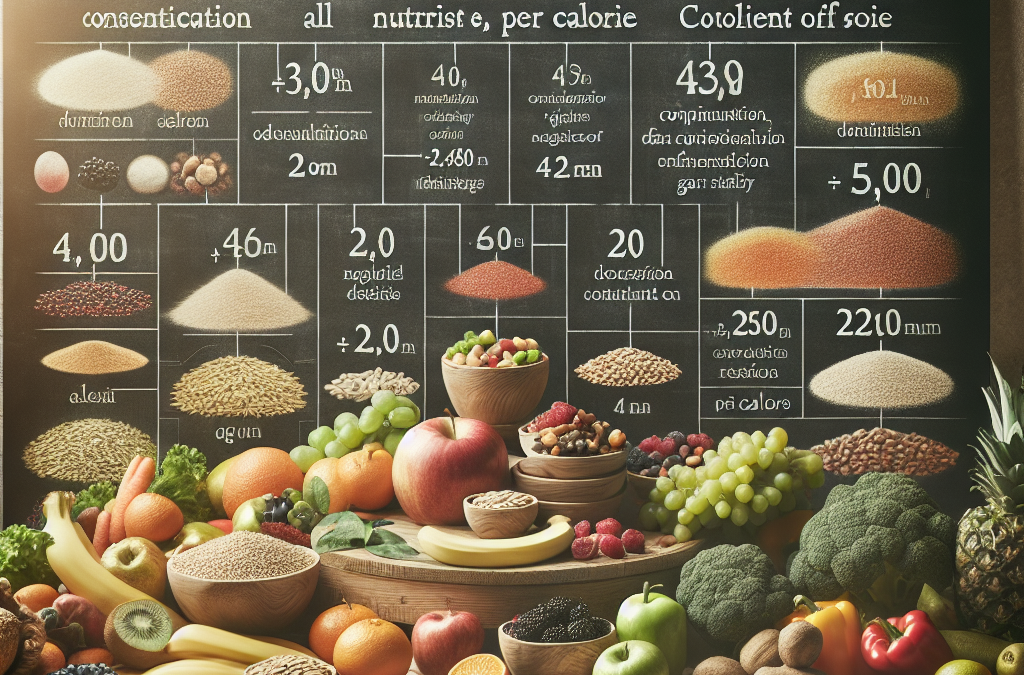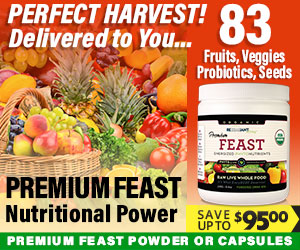The Basics of Nutrient Density
What is Nutrient Density?
Nutrient density is a term that really speaks to the essence of food. When I first heard it, I thought, “Okay, what’s the big deal?” But it’s so much more than just a buzzword. It’s all about the nutrients packed into the foods we eat, compared to the number of calories. Imagine indulging in a plate of vibrant vegetables, versus a bag of potato chips. One is a powerhouse, while the other is… well, not so much!
Nutrient-dense foods are packed with vitamins, minerals, fiber, and other beneficial compounds that your body needs. It’s like choosing a solid gold ring (the nutrient-dense food) over a cheap plastic one (the calorie-dense food). Both might look good at a glance, but the value is in the nutrient content!
Understanding this concept can make a world of difference in your dietary choices. Trust me, once you get the hang of it, you’ll start shopping and eating with a new mindset. It’s all about fueling your body with quality over quantity!
Why Does It Matter?
This is a no-brainer, right? We all want to feel good, and just stuffing ourselves with food isn’t going to cut it. When I shifted my focus to nutrient density, I realized that my energy levels soared and my cravings diminished. It’s as if I finally found the cheat code to health!
Eating nutrient-dense foods can help in weight management, improve overall well-being, and reduce the risk of chronic diseases. Processed foods often lead to increased hunger and sugar crashes, keeping us in a cycle of eating more junk. Who needs that kind of drama in their lives?
By choosing nutrient-dense options, you’re giving your body what it truly needs to thrive. Think of it as turning on the lights in a dark room, suddenly everything is clearer and more vibrant.
How to Identify Nutrient-Dense Foods
So now you might be wondering, how do I figure out which foods are nutrient-dense? First off, don’t get overwhelmed! It’s pretty straightforward. When shopping, I look for those whole foods that are as close to their natural state as possible.
Fruits, veggies, whole grains, lean proteins, nuts, and seeds are all winners! The more colorful your plate, the better—nature’s palette has an endless array of nutrients just waiting to work their magic in your body.
A good tip is to try and avoid foods with a long ingredient list, especially if most of the ingredients are hard to pronounce. Your body will thank you for it in the long run!
Building a Nutrient-Dense Plate
Balancing Food Groups
To create a nutrient-dense plate, I always focus on balancing different food groups. Think about including a variety of foods: proteins, healthy fats, and plenty of fruits and veggies. Each of these groups offers unique benefits that help keep things interesting and nutritious.
For instance, lean protein sources like fish and chicken can support muscle health, while healthy fats from avocado or olive oil can provide essential fatty acids. Mixing and matching these food groups can keep your meals feeling fresh and satisfying!
Meal planning can help in organizing your food choices and making sure you’re packing your plate with nutrient-dense options rather than defaulting to quick fixes. It’s like being your own health coach!
Incorporating More Nutrient-Dense Foods
If you’re anything like I was, it can be hard to change your eating habits overnight. But let me tell you, taking baby steps can lead to major changes over time. Start by swapping out one or two of your usual snacks for something like fresh fruit, veggies with hummus, or a handful of nuts.
Try to experiment with different cooking techniques too! Roasting, grilling, or steaming your vegetables can enhance flavor and retain nutrients. Have fun with it! Play around with herbs and spices to make those greens pop on your plate.
Before you know it, you’ll be craving those vibrant, nutrient-dense foods instead of the usual suspects. It’s all about making it enjoyable and exciting!
Listening to Your Body
Once you start eating more nutrient-dense foods, I found that my body began to respond positively. I pay closer attention to how different foods make me feel. When I eat something loaded with nutrients, my energy levels rise, while junk food tends to leave me feeling sluggish.
Get Certified Organic Whole Food Nutrition – Nutrient Dense Supplement
Trusting your body’s instincts is key! Learning to listen to what your body wants means you can pick and choose the foods that genuinely nourish you. It’s empowering!
Any learning process is about trial and error, so don’t be hard on yourself if you slip up. Each choice is an opportunity to learn and discover what works best for your unique body.
Navigating Social Situations
Making Smart Choices When Dining Out
Eating out can throw a wrinkle in my nutrient-dense plans, but I’ve picked up a few tricks along the way. When I crack open a menu, I look for the veggie-packed options and grilled over fried choices. Even a simple salad can be transformed into a nutrient-packed meal with the right toppings!
Don’t be afraid to ask for modifications! Most restaurants are more than happy to accommodate your requests. Get that dressing on the side, swap fries for a side salad, or opt for whole grains when available. Be that person who asks for what they want—it’s all part of the journey!
Also, don’t forget about portion sizes. If a dish seems massive, share it with a friend or take some home for later. It’s a win-win!
Handling Food Pressure
There are always those social gatherings where the temptation to dive into less nutrient-rich foods is real, right? I’ve learned to navigate those pressures graciously. I often bring a dish that aligns with my nutrient-dense goals—this way, I know there’ll be something tasty and healthy for me to enjoy.
Also, I remind myself that it’s totally okay to indulge every once in a while. The key is moderation! You don’t want to offend the host or miss out on all the fun—life is all about balance, after all.
Focus on enjoying the company around you rather than just the food. When meals become an experience shared with others, it adds a whole new layer to your enjoyment!
Staying on Track
It can be easy to drift away from nutrient-dense eating, especially during busy seasons or holidays. But I always keep a few go-to strategies in my back pocket. Meal prepping is one of them! Having ready-to-eat meals in the fridge means I’m less likely to revert to takeout.
Keep snacks handy too. I have a stash of nuts, yogurt, and fresh fruits just waiting in my pantry. That way, when hunger hits, I’ve got something nutrient-packed ready to eat. It really cuts down on those last-minute junk food grabs!
Remember, it’s a journey. If you fall off the wagon, just hop back on whenever you can! The amazing thing about nutrient density is it’s a lifestyle choice that you can embrace at your own pace.
Frequently Asked Questions
What are examples of nutrient-dense foods?
Examples include leafy greens like spinach, fruits like berries, legumes, nuts, seeds, and lean proteins such as chicken or fish. Whole grains like quinoa and brown rice also pack a nutritious punch!
How can I start incorporating more nutrient-dense foods into my diet?
Begin by swapping out snacks for healthier options, planning meals with a variety of food groups, and choosing whole, minimally processed foods. It’s all about balance and finding what works for you!
Is it possible to overeat healthy foods?
Absolutely! Even nutrient-dense foods can contribute to excess calories if consumed in large amounts. Moderation is essential, so listen to your body’s hunger and fullness signals.
Can I still enjoy treats while focusing on nutrient density?
Definitely! It’s all about balance. Enjoying treats occasionally is perfectly fine, but aim to pair them with nutrient-dense foods to create a well-rounded diet.
How do I measure nutrient density in food?
You can look at the nutritional content in terms of vitamins, minerals, and fiber relative to the calorie count. Tools like food labels, apps, and even websites can help you compare options!




